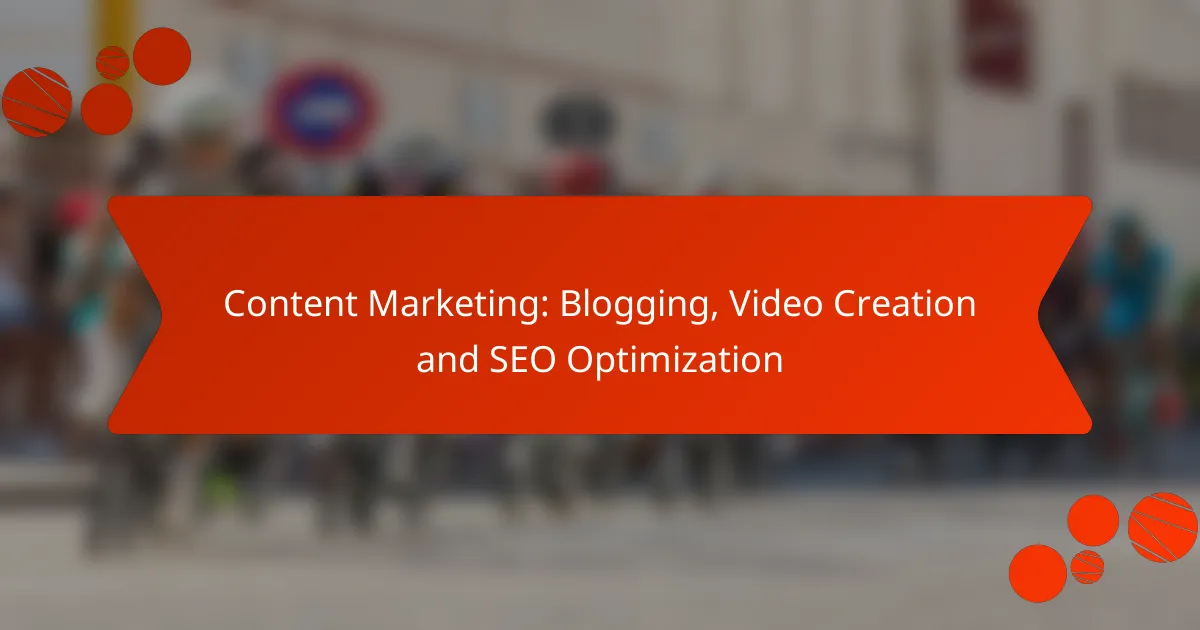Paid ads are a powerful tool for reaching potential customers, but their success hinges on effective targeting, budgeting, and performance tracking. By understanding your audience and employing strategic targeting methods, you can enhance engagement and conversion rates. Additionally, a well-structured budget ensures optimal resource allocation, while diligent performance tracking allows for continuous improvement and maximized return on investment.

How to effectively target audiences with paid ads?
Effectively targeting audiences with paid ads involves understanding who your potential customers are and how to reach them. By utilizing various targeting strategies, advertisers can ensure their ads are seen by the right people, maximizing engagement and conversion rates.
Demographic targeting strategies
Demographic targeting focuses on characteristics such as age, gender, income, education, and marital status. This approach allows advertisers to tailor their messages to specific segments, increasing relevance. For instance, a luxury brand may target higher-income individuals aged 30-50, while a children’s toy company might focus on parents aged 25-40.
When implementing demographic targeting, consider using platforms that allow for detailed audience segmentation. Facebook Ads and Google Ads provide robust tools for defining demographics, ensuring your ads reach the intended audience.
Behavioral targeting techniques
Behavioral targeting involves analyzing users’ online behavior, such as browsing history, purchase patterns, and engagement with previous ads. This technique helps in delivering personalized ads based on users’ interests and actions. For example, if a user frequently visits travel websites, they may see ads for vacation packages or travel gear.
To effectively use behavioral targeting, leverage data analytics tools that track user interactions. Be cautious, however, as overly invasive targeting can lead to privacy concerns. Always ensure compliance with regulations like GDPR when collecting and using personal data.
Geographic targeting methods
Geographic targeting allows advertisers to reach audiences based on their physical location, which can be particularly useful for local businesses. This method can range from targeting specific countries to narrowing down to cities or even neighborhoods. For example, a restaurant can target ads to users within a 10-mile radius.
Utilize geotargeting features available on platforms like Google Ads and social media to set location parameters. Consider local language and cultural nuances in your ad copy to enhance relevance and effectiveness.
Interest-based targeting options
Interest-based targeting focuses on users’ interests and hobbies, allowing advertisers to connect with audiences who are more likely to engage with their products or services. This can include categories like sports, technology, or fashion. For instance, a fitness brand might target users interested in health and wellness.
To implement interest-based targeting, use audience insights tools provided by advertising platforms. Regularly update your targeting criteria based on emerging trends and user feedback to maintain effectiveness and relevance in your campaigns.

What budgeting strategies should be used for paid ads?
Effective budgeting strategies for paid ads involve setting clear financial limits, choosing the right pricing model, and distributing funds wisely across various platforms. A well-planned budget can maximize return on investment (ROI) and ensure that advertising efforts align with business goals.
Setting daily and monthly budgets
Establishing daily and monthly budgets is crucial for managing ad spend effectively. Daily budgets help control costs and prevent overspending, while monthly budgets provide a broader view of overall expenditure. Aim for a daily budget that reflects your total monthly budget divided by the number of days in the month.
For example, if your monthly budget is $600, set a daily budget of around $20. Adjust these figures based on campaign performance and seasonal trends.
Cost-per-click (CPC) vs. cost-per-impression (CPM)
Understanding the difference between cost-per-click (CPC) and cost-per-impression (CPM) is essential for budget allocation. CPC charges advertisers only when users click on their ads, making it suitable for campaigns focused on driving traffic. In contrast, CPM charges based on the number of times an ad is displayed, which is ideal for brand awareness campaigns.
Choose CPC if your goal is to generate leads or sales, while CPM may be better for increasing visibility. Consider testing both models to see which yields better results for your specific objectives.
Allocating budget across platforms
When allocating your budget across different advertising platforms, consider where your target audience spends their time. Popular platforms like Google Ads, Facebook, and Instagram each have unique strengths and user demographics. Allocate funds based on the performance metrics of each platform.
A common approach is to start with a 70-20-10 split: 70% of your budget on the primary platform, 20% on a secondary one, and 10% for testing new channels. Regularly review performance data to adjust allocations as needed, ensuring optimal use of your advertising budget.

How to track performance of paid ads?
To track the performance of paid ads effectively, utilize key metrics that indicate how well your ads are achieving their goals. This involves monitoring conversions, click-through rates, and return on ad spend to assess overall effectiveness and make necessary adjustments.
Key performance indicators (KPIs) for ads
Key performance indicators (KPIs) are essential for evaluating the success of your paid ads. Common KPIs include click-through rate (CTR), conversion rate, cost per acquisition (CPA), and return on ad spend (ROAS). Tracking these metrics helps identify what is working and what needs improvement.
For instance, a high CTR indicates that your ad is engaging, while a low conversion rate may suggest issues with the landing page or offer. Aim for a CTR above 2% and a conversion rate between 2-5% as general benchmarks, but adjust these based on your industry standards.
Using Google Analytics for tracking
Google Analytics is a powerful tool for tracking the performance of your paid ads. By linking your ad campaigns to Google Analytics, you can gain insights into user behavior after they click on your ads. This includes tracking sessions, bounce rates, and conversion paths.
To set this up, create goals in Google Analytics that align with your ad objectives, such as form submissions or product purchases. Regularly review the data to understand which ads drive the most valuable traffic and optimize accordingly.
Ad platform analytics tools
Most ad platforms, such as Google Ads and Facebook Ads, offer built-in analytics tools that provide detailed performance reports. These tools allow you to track impressions, clicks, and conversions directly within the platform, making it easier to assess campaign effectiveness.
Utilize these analytics to compare different ad sets and audiences. For example, you might find that one demographic responds better to your ads, allowing you to allocate your budget more effectively. Regularly check these metrics to adapt your strategy and maximize your ad spend efficiency.

What are the best practices for optimizing ad performance?
To optimize ad performance, focus on data-driven strategies that enhance engagement and conversion rates. Key practices include A/B testing, adjusting bids based on performance metrics, and implementing retargeting strategies to reach potential customers effectively.
A/B testing for ad creatives
A/B testing, or split testing, involves comparing two versions of an ad to determine which performs better. By changing elements like headlines, images, or calls to action, advertisers can identify what resonates most with their audience.
When conducting A/B tests, ensure that you only change one variable at a time for clear results. Aim for a sample size that provides statistically significant data, typically in the hundreds or thousands, depending on your audience size.
Adjusting bids based on performance
Adjusting bids according to ad performance is crucial for maximizing return on investment. Monitor key metrics such as click-through rates (CTR) and conversion rates to inform your bidding strategy.
Consider using automated bidding strategies offered by platforms like Google Ads, which can optimize bids in real-time based on performance data. Regularly review and adjust your bids to ensure you are not overspending on underperforming ads.
Utilizing retargeting strategies
Retargeting allows you to reconnect with users who have previously interacted with your ads or website. This strategy can significantly increase conversion rates by reminding potential customers of products they viewed but did not purchase.
Implement retargeting campaigns across various platforms, such as social media and display networks, to maintain visibility. Use segmentation to tailor your messages based on user behavior, which can enhance engagement and drive conversions.

What criteria should be considered for selecting ad platforms?
When selecting ad platforms, it’s essential to evaluate audience reach, available ad formats, and cost-effectiveness. These factors will help determine which platform aligns best with your marketing goals and budget.
Audience reach and demographics
Understanding the audience reach and demographics of an ad platform is crucial for effective targeting. Platforms like Facebook and Instagram offer extensive reach across diverse age groups, while LinkedIn is more suitable for B2B targeting, focusing on professionals and specific industries.
Consider the geographic location of your target audience as well. For instance, platforms popular in the U.S. may differ from those favored in Europe or Asia, impacting your campaign’s effectiveness.
Ad format options available
Different ad platforms provide various ad format options, which can significantly influence engagement. For example, Google Ads offers text, display, and video ads, while platforms like TikTok focus on short, engaging video content.
Choose a platform that supports ad formats that resonate with your audience. If your target demographic prefers visual content, platforms with strong image or video capabilities may yield better results.
Cost-effectiveness of platforms
Evaluating the cost-effectiveness of ad platforms involves comparing the potential return on investment (ROI) against advertising costs. Platforms like Google Ads operate on a pay-per-click (PPC) model, which can be beneficial for budget-conscious advertisers.
It’s important to set a clear budget and monitor spending closely. Many platforms allow you to set daily or monthly limits, helping you manage costs while maximizing ad performance. Consider testing multiple platforms to identify which offers the best ROI for your specific campaigns.

How to measure return on investment (ROI) for paid ads?
Measuring the return on investment (ROI) for paid ads involves calculating the revenue generated from ad campaigns relative to the costs incurred. This assessment helps businesses understand the effectiveness of their advertising efforts and make informed budget decisions.
Calculating ROI metrics
To calculate ROI for paid ads, use the formula: ROI = (Net Profit / Cost of Investment) x 100. Net profit is the total revenue generated from the ads minus the total ad spend. For example, if you spent $1,000 on ads and generated $4,000 in sales, your ROI would be 300%.
Consider tracking additional metrics such as Cost Per Acquisition (CPA) and Customer Lifetime Value (CLV) to gain deeper insights. CPA indicates how much you spend to acquire a customer, while CLV estimates the total revenue a customer will generate over their lifetime. These metrics can help refine your ad strategies.
Attributing conversions to ad spend
Attributing conversions to ad spend involves determining which ads or campaigns led to specific sales or actions. This can be done using tracking tools like Google Analytics, which can link conversions back to the respective ad campaigns. Proper attribution is crucial for understanding the true effectiveness of your advertising efforts.
Consider using multi-touch attribution models to get a comprehensive view of the customer journey. These models assign value to each touchpoint in the conversion path, rather than crediting only the last ad clicked. This approach can reveal the real impact of various ads and help optimize future spending.


